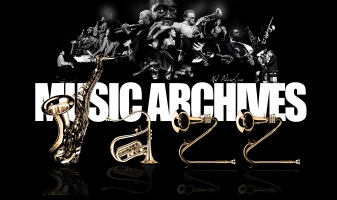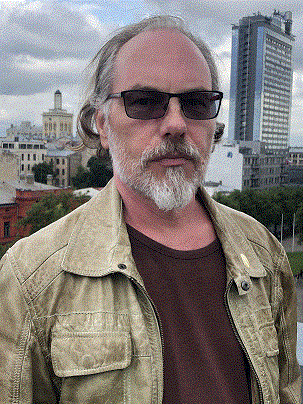
 |
Harald Kisiedu : Jazz Experimentalism in Germany |
Post Reply 
|
| Author | |
snobb 
Forum Admin Group 

Site Admin Joined: 22 Dec 2010 Location: Vilnius Status: Offline Points: 30602 |
 Post Options Post Options
 Thanks(0) Thanks(0)
 Quote Quote  Reply Reply
 Topic: Harald Kisiedu : Jazz Experimentalism in Germany Topic: Harald Kisiedu : Jazz Experimentalism in GermanyPosted: 08 Jun 2020 at 4:37am |
|
Harald Kisiedu: European Echoes: Jazz Experimentalism in Germany 1950 – 1975. olution. The bop revolution is seen as a rejection of the values and methods of the swing era and the big bands of that era; the modal and free jazz movements of the 1960s onwards are also seen as throwing off and abandoning the constraints of a harmonic approach to jazz. More nuanced accounts of those key movements would, however, favour a discourse of evolution rather than revolution, in which musicians develop their own voice through engaging with and developing the music of a former generation. Thus the music of the swing era can be seen as leading naturally into the bop movement, and modal jazz and free jazz as natural developments of bop of the 1940s and the 1950s, and the hard bop movement of the 1960s. Author Harald Kisiedu is a music historian and lecturer at the Institute of Music in Osnabrück, part of the University of Applied Sciences. He is also a saxophonist, improviser and recording artist. In this excellent survey of the German free jazz scene from 1950 to 1975, based on his doctoral thesis at New York’s Columbia University, he discusses a similar theme in the discourse of jazz, the reference to the growth of the German free jazz scene as ‘emancipation’, by which is meant the breaking away from and rejection of American jazz traditions by players in Germany. Kisiedu argues very effectively that the discussion of the German free scene should be much more nuanced and that the pioneers of the scene engaged very strongly with the American scene, initially with earlier forms of jazz, and certainly with the hard bop movement before becoming influenced by the ‘new thing’ of the late 1960s and the 1970s. So the development of the German scene should be regarded as a process in which free players developed their own identity, initially through listening to the key Americans and later by playing with them. They certainly did not reject American jazz and it can even be argued that the influence also went the other way and that German players also had an influence on the Americans. Kisiedu quotes George Lewis as believing that the European free scene is part of a second generation with a globalised notion of jazz. Kisiedu then develops this hypothesis by the detailed examination of the careers of four key players on the German free scene: Peter Brötzmann has the first chapter to himself, then Manfred Schoof and Alexander von Schlippenbach share a chapter, followed by a chapter devoted to Ernst-Ludwig Petrowsky. Petrowsky remained rooted in East Germany throughout the communist period and there is thus an interesting contrast between the two German scenes across the three chapters. There are also shorter descriptions of the careers of Peter Kowald, Gunter Hampel, Gerd Dudek, Kurt Edelhagen, Irene Schweizer and the Kühn Brothers, Rolf and Joachim. The detailed descriptions of the four main musicians discussed, Brötzmann, Schoof, Schlippenbach and Petrowsky, have fascinating similarities and differences. All four discovered American jazz partly through the broadcasts of Willis Conover on The Voice of America, and all four were initially attracted by the jazz of the 1950s, the hard bop of Horace Silver and Art Blakey in the case of Schlippenbach and Schoof, Lee Konitz and Paul Desmond in the case of Petrowsky, and, interestingly, Humphrey Lyttelton and Chris Barber in the case of Brötzmann. Apparently Brötzmann came with a friend to Birmingham in 1955 at the age of 14 and heard the bands of both Lyttelton and Barber and then heard Joe Harriott in London on the way back. All four then discovered the music of the ‘new thing’ in USA, especially that of Ornette Coleman, Cecil Taylor, Albert Ayler and late Coltrane and this became the major focus of their own music. They established strong links with the American scene and in time with other European scenes and played a key role in making free jazz and improvised music a vital part of worldwide contemporary music. One major difference between the four is their route into full time careers in music; Brötzmann received no formal musical education. His first goal was to become a visual artist and he attended a School of Applied Arts in Wuppertal. His musical emergence came about as result of his involvement with Fluxus, a loose group in USA and Europe of artists and musicians who were anti-elitism in art. He was also heavily involved in these early days with squats and far left groups. Working with Peter Kowald and with leaders of the American avant-garde, such as Don Cherry, Steve Lacy and Albert Ayler cemented his commitment to free jazz. By contrast, Schoof and Schlippenbach followed the jazz programme at the Cologne Music School (Cologne Musikhochschule) directed by Kurt Edelhagen, who also led a big band. Here they were strongly influenced by their association with the Bernd Alois Zimmermann, a composer with a strong interest in jazz and who incorporated certain features of jazz into his compositions. Petrowsky was initially self-taught on the saxophone, but took clarinet lessons. He attended the Weimar Music School (Hochschule für Musik Franz Liszt Weimar), but only received instruction in violin and piano. All four musicians received a lot of initial opposition to their forays into free jazz and improvised music. Brötzmann was mocked by fellow musicians and was regarded by critics as ‘dangerous and transgressive’. Schoof and Schlippenbach along with their mentor Zimmermann received quite hostile opposition in the Cologne School of Music and Petrowsky had to face the opposition of the authorities in East Germany who associated jazz with Western decadence. It is interesting, however, to note that jazz became respectable there as a result of the appointment of Karl-Heinz Deim , a big jazz fan, to the deputy directorship of East German radio station Rundfunk der DDR. He set up Petrowky’s Ensemble Studio IV group. In this regard the increased interest in West Germany in collaborating with players from East Germany and the prestige that this brought also added to the willingness of the East German authorities to tolerate jazz. Throughout the book the role of the highly influential journalist, author and producer Joachim-Ernst Berendt is palpable. The publicly owned radio stations in the different states (Länder) in West Germany and that in East Germany are shown to have been vital in their support of jazz. It is interesting to reflect whether similar support from the BBC would have provided a firmer base for similar experiments in UK. The book is very successful in bringing together its hypothesis with descriptions of the careers of the key musicians. There are many details never before published, certainly not in English. The book is written in very clear and easy-to-read English without losing its academic rigour. Further details and references are provided in extensive footnotes, but these are mostly in German. The conclusion is also clear and apposite. The book makes an important contribution to studies of European jazz. LINKS: European Echoes at Wolke Verlagfrom https://londonjazznews.com
Edited by snobb - 08 Jun 2020 at 4:37am |
|
 |
|
Post Reply 
|
|
|
Tweet
|
| Forum Jump | Forum Permissions  You cannot post new topics in this forum You cannot reply to topics in this forum You cannot delete your posts in this forum You cannot edit your posts in this forum You cannot create polls in this forum You cannot vote in polls in this forum |